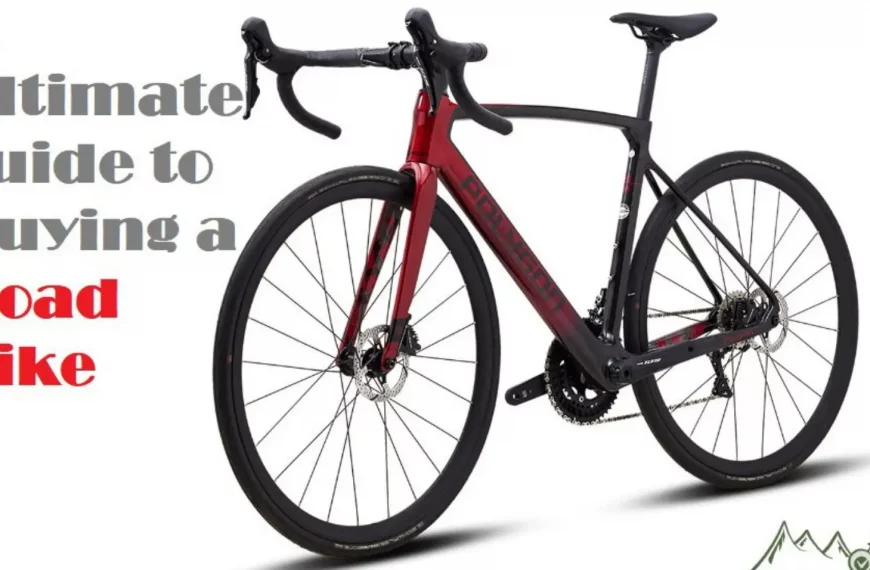Various Types Of Bike Computers
You can free up valuable space in your home or garage with the help of our wall bike mount rack. The size of bicycles when they are horizontal makes them challenging to store. This issue can be resolved by mounting your bike against a wall.
In addition to protecting your bike by storing it by its wheels (rather than its rims or spokes) when you lift it off the floor, wall mount bicycle racks also free up your floor space for a variety of other activities. Just think of what you could do in a garage or shed with extra floor space to use for the other activities you enjoy.
Table of Content
In this guide we have covered the following areas for building a wall bike mount rack
TOOLS AND MATERIALS:
To create the best possible Handmade accessory drawer-equipped wall bike rack. Although you can adjust this bike rack to support the front wheel or handlebars if you’d prefer, it will hang the bike up by its top tube. The garage or a nook in a room is the ideal places to keep it. The good news is that you won’t need to significantly harm your wall because there are only two screw holes in the wall. Always keep in mind that you can add your own spin to the concept.
Generally speaking, you won’t require anything extravagant. You’ll need a sheet of 3/4-inch plywood that is 4 feet wide and 4 feet height for the task. Now, you’ll need a 10-1/2-inch-long 2×5 board, to ensure it’s short.
Choose veneered plywood for a stylish bike rack because of its smooth surface. Choose CDX plywood and fasten it to the edge of a stud if you want rough, unfinished wood.
TOOLS:
- Drill
- Jig Saw
- Miter Saw
- Clamps
- Table Saw
- Tape Measure
MATERIALS:
- 2 x 6 Wood or Lumber
- 2” Trim Head Screw
- 4’ x 4’ 3/4” Plywood
- Wood Glue
SAFETY PRECAUTIONS:
Priority one is safety: You will always require tools, and under no circumstances should you use them without the proper protective apparel, regardless of which project is next on your list or which DIY task you simply can’t put off any longer. The accessories that are a must-have for each tool are listed in our guide.
- Every time you are drilling, safety goggles and earplugs are a must.
- When using our surface-processing equipment, such as a multi-sander, always wear a mask.
- When undertaking any decorating tasks, protective clothing’s, equipment is also necessary.
- Always use eye protection: When operating the majority of instruments, safety goggles are required.
STEPS TO BUILD BIKE MOUNT RACK ON THE WALL:
Setting up your workspace in advance is simpler. Whether your bike is mounted vertically or horizontally, be sure you have adequate wall space to accommodate it. Make sure the bike won’t be blocking any windows or doors, or even in a hallway where it might irritate you, by experimenting with different height settings. To ensure that it fits your bike, measure it using a tape measure.
These are basic techniques that anyone may learn to make this bike rack, novice or expert alike. Although they are not difficult to pick up, if you have never used them before, you might want to try using them on some scrap wood first to get control.
CUTTING AND SAWING:
A table and miter saw are featured in the list of instruments since they are ideal for giving you a clean cut for a high-quality finish.
If you’d rather, you can just use a jigsaw or circular saw, but a clean finish will be more challenging to achieve. Although for a smooth appearance, you could just sand the edges down. Depending on your level of expertise, you ought to be able to finish the sawing in one hour. For putting in the screws, you’ll also need a drill with the appropriate drill bit.
| REF | AREA | DIMENSIONS | MATERIAL | QTY |
| 1 | TOP & BOTTOM | ¾” x 10.1/2”x 16” | 3/4” plywood | 2 |
| 2 | SIDES | ¾” x 7” x 16” | 3/4” plywood | 2 |
| 3 | DIVIDER | ¾” X 5.1/2” x 10,1.2” | 3/4” plywood | 1 |
| 4 | DRAWER SIDES | ¾” x 5.1/2” x 10.1/2” | 3/4” plywood | 2 |
| 5 | DRAWER BOTTOM | ¾”x 9.3/4” x 6.3/4” | 3/4” plywood | 1 |
| 6 | DRAWER BACK | ¾” x 5.1/2” x 6.3/4” | 3/4” plywood | 1 |
| 7 | CLEAT | 1.1/2”x5.1/2”x10.1/2” | 3/4” plywood | 2 |
CUTTING:
Draw a circle on the board using a soda can, then draw two lines: one from the bottom of the circle to 2 inches over the top of the board. Cut off the lines you created to create the tube slot using the jigsaw.
Cut off one of the sides along with the front and side parts of the drawer using the mitre saw now. To ensure that the front of the drawer matches the other dimensions, cut along the exterior of the drawer front.
SCREW DIVIDER:
To glue and screw the sides and front together, clamp them together. Attach the little rear piece and side top tube slot to the drawer base using glue or screws. The partition can now be secured in place using glue or screws. Put the divider flush against the parts using the clamps, and then fasten the drawer guide into the box.
Make sure the top is flush before flipping the assembly over to secure it to the box. Keep your position by using the screws. The drawer must first be clamped together before being assembled with glue and screws. While attaching the remainder of the drawer front, you can put a piece of wood under the drawer as a spacer.
CLEAT:
The advantage of this bike rack is that it only needs one stud to be secured. Make a pencil or tape mark where the stud is. Now use a 3 inch screw to secure the top screw in the cleat. Before you insert the second screw, make sure the board is level. Drill four 2 inch screws, two for the top and two for the bottom, while holding the rack up against the wall.
The finished product should resemble a box with a side drawer and an aperture for the top tube of the bicycle.
FINAL STEP:
After everything is constructed, you might wish to paint it to match the walls a little bit. For instance, you may place a plastic laminate over a white enamel base using contact cement.
If painting is more your style, prime the surface with acrylic first, then apply a water-based polyurethane for a glossy finish. No matter what your interests are, it’s a fun and reasonably inexpensive DIY project.
MISTAKES TO AVOID:
Following are some things you MUST NEVER do when storing your bike:
- Never keep a soiled bike in storage for an extended period of time. Any water or dirt left on your bike’s frame could harm the finish, corrode, or cause other problems like bolts to seize.
- Never leave your bicycle out overnight. Your bike may rust or develop other damage from the environment, and it may even be stolen with ease!
- Never put your bike in a position where the gearbox could be damaged, such as leaning against something or lying on the ground with the gears down. You run the danger of fracturing or bending this pricey and crucial component.
- If your bike has hydraulic disc brakes, you should never store it upside down. Air can enter the calipers more easily when the bike is upside down, resulting in spongy or nonexistent braking.
I’m eager to continue developing products for this area. Friends, in the meantime you can also search via google or youtube, there is a plenty of creative DIY ideas for bike mount rack. Cheers
Bike Mount Rack FAQs:
Is it OK to hang a bike by the wheel?
A bike can easily be hung up by its wheel. The wheel is made to support weights that are much heavier than the weight of the bicycle. The tyre holding the bike upright will be the only potential issue if it goes flat.
Is it OK to store bike upside down?
It states in the user guide for its hydraulic disc brakes: “The disc brake is not intended to operate when the bicycle is upright. The brake might not function properly if the bicycle is turned on its side or upside down, which could result in a serious accident.
What can I use as a bike stand?
Anything that allows the wheels and pedals to swivel can make a decent repair stand, including a storage stand. A car rack also functions admirably.
Are vertical bike racks bad for bikes?
Even very heavy bikes can be hung without any issues. You don’t need to worry about damaging the bike or your walls, however I would advise using two hooks to be careful. Is it acceptable to hang bikes backwards? Unless it has a hydraulic braking system, hanging your bicycle upside down is harmless.
How far apart should bike hooks be?
Put 36 cm (14 inches) between hooks. Once the hooks are set up, all that’s left to do is fasten the hook board to the wall at the desired height.
Contact Us
If you have any suggestions or advise, please feel free to reach us via our Contact Us here.



